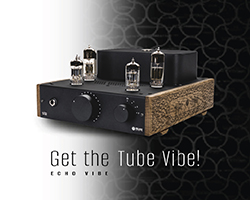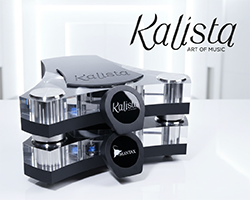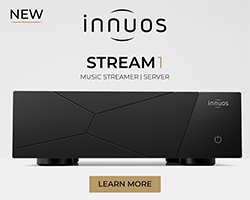This article was first published in the February 2014 issue of Hifi Pig Magazine which can be downloaded free of charge.
Scott Berry is a US-born audio engineer and the founder and owner of Computer Audio Design (CAD). The company’s debut product, the 1543 DAC, won the ‘best-sounding hi-fi room’ at the UK’s largest hi-fi show – Bristol Sound and Vision 2013 – against hundreds of well-established brands. He takes time out to answer Hifi Pig’s Behind the Brands Questions.
Your History
How did you get into/what was your first job in the industry?
I graduated in 1989 with a BSc in electrical engineering and one of the main reasons I got into engineering was my interest in audio. My first job out of college was at an audio testing agency, which gave me a head start when I started Computer Audio Design (CAD) about three years ago.
I worked at Tektronix (the oscilloscope company) and then Xerox in R&D and manufacturing. I started working on DAC design a few years ago and then decided to make my product available to fellow music lovers.
Who or what was the biggest influence on your career?
I always followed what Nelson Pass and Helmut Brinkmann were doing; I have met Helmut a couple times now and use his amplifiers.
Proudest moment/product you’re most proud of?
Our first audio event was at the UK’s biggest hi-fi show last year: Bristol Sound and Vision, 2013. It was our first show and we were debuting our first product, the 1543 DAC, so we were understandably a bit nervous. However, following a visit from the Clarity Alliance (formerly BADA – the British Audio Dealers Association) show judges, we later learned that we had won the ‘best-sounding hi-fi room’ against 140 established hi-fi brands — I couldn’t believe it!
I have spent many, many years on the R&D of the 1543 DAC and to get the best sound in show against all those established brands who have had experience of exhibiting and playing music at shows for decades, well, that was my proudest moment!
You and your system.
What was your very first system?
With the money I earned from my first job in High School, I bought a huge Pioneer receiver and then a Nakamichi 480 cassette deck. I then made my first speakers.
Tell us about your system history.
My first serious system consisted of one of the first Naim Nait integrated amps, a Rega Planar 2 and Linn Kan speakers. In the USA in the 1980s, nothing I heard came close to what Naim, Rega and Linn were producing, so those three companies got the share of my money for many years. I developed the 1543 DAC using my wife’s old Naim 180 amplifier that I modified (slightly)!
What component/product do you miss the most/wish you had never got rid of?
My Linn Kan Speakers. They were great in smaller rooms.
Best system (or single component) you have ever heard (no brands you represent please…!)
I think the Nelson Pass First Watt SIT-1 Mono Amplifiers are the best amplification I have heard. Unfortunately, they only put out 10 watts each so you need an extremely efficient speaker to get the best out of them.
Tell us about your current system(s)
I have, of course, the 1543 DAC. It is connected directly to a pair of Brinkmann Mono Amplifiers that drive a pair of Dynaudio C1 speakers. I have many computers as sources, both Mac and PC, but my reference is a brand new product (which hasn’t even been announced or press released yet) and will debut at this year’s Bristol Sound Vision show (2014). It’s a new type of dedicated transport called the CAD Computer Audio Transport (CAT). It has been designed to complement the 1543 DAC, providing consumers with a complete high-quality computer audio source component.
The CAT, when used with the 1543 DAC, has been designed to provide the best-sounding source component possible. I have used all my skills to produce this transport and it is pretty special. CAD is also launching another new product at Bristol, the CAD cable, which is a high-performance USB cable of my own design. I have been working on it for almost two years now and I have a couple patents pending on it, so I am pretty proud of it. My other system RCA interconnects include Townshend F1 Fractals, or The Chord Company’s excellent Sarum Tuned ARAY. Speaker cables are either Townshend Isolda, Tellerium Q Ultra Black, or The Chord Company’s new Epic Reference.
The state of the industry
What’s your view on the valve renaissance of the past 20 years or so?
I think it makes a lot of sense. I believe that simpler circuitry provides better sound. Many tube products have a sound that to my ears, is just more natural. Maybe it’s not! But who cares? — if it works for you that is all that matters. More people need to hear how good a single-ended tube amp can sound.
What are you views on the state of the industry/where is it going/what will it look like in 5 years/what will typical systems look like?/What will happen to prices?/What will happen to the high end – will it carry on regardless?
One of the reasons I call my company Computer Audio Design, or CAD for short, is because I believe the future of music will be directly linked to computers. It is already happening: so much music is available by download or streaming and it all requires a computer (in some form) to function. There is a huge movement of small companies producing high-quality playback software for ridiculously low prices. The next thing is computer hardware designed for audio. There are already companies producing products that have a very low cost in audio terms, that make a real difference in sound quality.
It is my belief that the best sound quality that we will ever hear will come from a computer-based system and that these systems will cost substantially less than what we currently pay. I think better sound, lower price and more convenience is what the future holds for the audio industry.
What are the industry’s biggest con(s)?
The audio industry has been through some tough times. How many shops have gone under in the last 10 years? — we probably all know of at least a couple. The industry needs something new to get customers excited about sound quality. The iPod brought convenience, but lost the quality. From what I have seen the age group of people interested in higher-quality sound is well over 40, unless you look at computer based audio. The industry needs to bring out some new exciting technology that gets customers enthusiastic again.
Presuming the measurements are fine, what do you listen for when assessing products?
I get in a lot of trouble every time I say this, but I am not all that interested in measurements — they only tell part of the story. I do, of course, have all the oscilloscopes and spectrum analyzers, etc. after all, this is where my career started, but some of the best-sounding products I have heard do not measure all that well. Take a look at the First Watt SIT-1:
Just under 5% distortion at 10 watts!
I listen for naturalness, non-fatiguing sound, low noise floor, speed, rhythm (foot-tapping), soundstage and emotional impact. There are countless examples of audio products that sound incredible but don’t measure that well. Valve amplifiers are a case in point.
Your sound preference -‘Smooth, listenable musicality’, ‘forward, driving, ‘foot-tapping’, involving sound’ or ‘detailed neutrality and transparency’?
I think I just answered this! : )
Your preference – Full-range floorstanders or freestanding mini monitors with a sub?
A smaller two-way mini monitor works for me and there’s a huge amount of support for this approach out in the audio community and even within the press.
It’s all about the music, man…
What is your favourite recording?
It changes all the time! At the moment, it’s John Martyn with Solid Air.
Tell us about your 3 most trusted test recordings.
Cowboy Junkies: Studio or Acoustic Junk single-mic recordings are superb; great space and sound staging.
Damian Rice: O is good for seeing how well a system lets you ‘get’ the emotion of the artist.
Leonard Cohen: Old Ideas. Incredibly well recorded and, I feel, his finest. There’s detail everywhere.
What are your most embarrassing recordings/guilty musical pleasures.
I listen to a lot of older classic stuff that my wife hates! Traffic for three hours straight? No problem!
Grateful Dead, Rickie Lee Jones, The Byrds, Van Morrison, Lou Reed — it’s all good!
Having safely ushered your loved ones out of the house as it is burning down to the ground, you ignore all standard safety advice and dash back inside to grab just one recording – what is it?
Well, since I am a computer audio guy, I can grab my hard drive with 4,000 full-resolution albums on it. But, I think that avoids the question! Bethany & Rufus 900 Miles, it’s out of print and killer.



















































































































































































































You must be logged in to leave a reply.